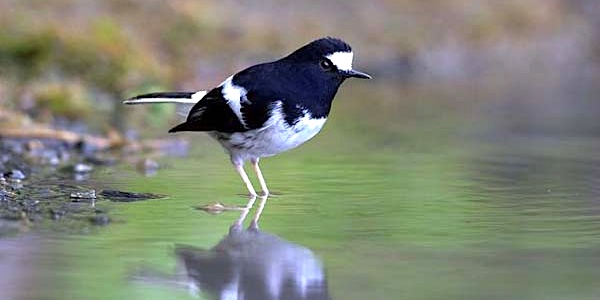Birds of Assam and West Bhutan
Tour - 23 days
Birds of Assam and West Bhutan
Tour - 23 days
About Assam and Bhutan
Assam is the only state in north-east India that is almost entirely low lying. It consists largely of the flood plains of the Brahmaputra, one of the largest untamed rivers in the world. The climate is fantastic for rice cultivation, all kinds of tropical crops, bamboo cultivation and fish farming.
Assam is relatively densely populated. The legal part of the population consists of at least 35 million people on an area of 78,000 square kilometers (similar to Czechia, a bit smaller than Austria).
Read more…Read less
Assam is home to some very special and spectacular wildlife, including the Indian one-horned rhino, the clouded leopard, the red panda and incredible variety of colorful birds. Many of the birds are large and can be seen easily, especially in Kaziranga N.P, such as the greater adjutant stork, the black-necked stork (both as large as a 12-year old child), pelicans and the great hornbill.
Bhutan has one of the highest biodiversities of all countries in the world, and thanks to a far-sighted government and a Buddhist, generally animal-friendly population, it’s natural heritage ranks among one of the best protected in the world as well. Thanks to a very strict protection of its forest, more than 65% of the forest is still intact. Moreover, 31% percent of its surface is protected in national parks and corridors (highest in the world, cf. India 3%). Though its size is barely more than the Netherlands, about 770 species of birds have been recorded in Bhutan (that’s 50% more than in the whole EU). The kingdom is recognized as the habitat for 221 globally endemic birds. Their habitats range from some of Himalaya’s most extensive and least disturbed tropical forests to cool broad leaved and towering evergreen forests of fir, hemlock and spruce.
Though mammals typically are found in lower densities than at the fertile plains of the Brahmaputra, they can also be found throughout large parts of the country, not just in protected areas.
Read more…Read less Apart from all the mammals that can be seen in nearby Assam, Bhutan has some specialties, such as the tahr goat, the ghoral (also a mountain goat) and the takin, the national animal of Bhutan. The takin looks like a cross between a moose and a cow. Bhutan is possibly the only country in the world where the tiger and elephant population is increasing. It also has 150-200 snow leopards, though these can only be seen at high altitudes.
The country is bisected by a well-maintained and paved road and as traffic in Bhutan is very light, one can enjoy the scenery and observe birds and wild life almost anywhere, not just inside the protected areas.
Region
Assam (India) & Bhutan
Best Time
March/April &
Nov/Dec
No. Of Days
23 days
Trip Character
Birding tour,
jeep-tour
Sleeping Altitude
100 - 2900 m
Price
INR XXX/ $ XXX
ABOUT THIS TOUR
On this tour, you will travel to the kingdom of Bhutan and the rarely visited Northeast of India. This area is home to some very special and spectacular wildlife, including the Indian one-horned rhino, the clouded leopard, the red panda and incredible variety of colorful birds. Many of the birds are large and can be seen easily, especially in Kaziranga N.P, such as the greater adjutant stork, the black-necked stork (both as large as a 12-year old child), pelicans and the great hornbill.
You will start from Jorhat, India’s second most easterly town and then visit Kaziranga N.P., home to three quarters of the remaining population of Indian one-horned rhinos.
You will continue to the picturesque Nameri N.P. and then to Manas N.P., right at the border with Bhutan. This park has the highest number of endangered animals of all Indian parks. To name a few: clouded leopard, hispid hare and pygmy hog.
From this park, we’ll cross into Bhutan, where we visit the adjacent park in Bhutan, Royal Manas N.P. This park is home to the increasingly rare red panda. We’ll cross this park on foot and then continue our journey through Bhutan. Gradually, we’ll see the transition from (semi) tropical rainforest to the temperate moist forests of the lower Himalayas.
Read more…Read less
A highlight will be the idyllic Phobjika Valley, the winter home of the beautiful black-necked cranes. After that we’ll travel westward to Paro, on the way visiting protected areas and some of the cultural highlights of Bhutan, such as the Punakha Dzong.
YOUR custom-made TRIP
The tour described here, as well as the other ones on our website, are mainly meant as suggestions. We would be happy to offer you a travel proposal that fully meets your personal demands and expectations. That means that you choose where you want to go, what level of accommodation and type of transport you want and what activities you prefer.
Please let yourself be inspired by this and other trips on our website and then drop us a line (or call us) to explain your travel wishes. We will be happy to help you put together the perfect trip. You can reach us over e-mail, Messenger, Whatsapp or mobile phone.
EXTENSIONS & VARIATIONS
Apart from the tour as described here, you could consider the following add-ons and changes:
- Spend extra days at Kaziranga National Park, enhancing your chances of seeing the elusive tiger. Kaziranga has 6 different ranges, parts of the park that each have their own character in terms of landscape and chances of seeing different species. So you need 6 days to see them all.
- Spend a few days more at Punakha and Thimphu, as these places have a lot to offer if you are interested in the Bhutan’s culture. Also, Thimphu is a very pleasant little city and has excellent cappuccino bars where you can work on your notes and sort your 10.000 pictures.
- If birding is your main interest, consider spending a few days at Eaglenest Wildlife Sanctuary, which is located half a day’s drive west of Nameri National Park.
ITINERARY
-
.fa-info {color: #1146a9;}.fa-info:hover {color: #387dff;}Day 1: Delhi / Kolkata ✈︎ Jorhat - Kaziranga N.P. (flight 2.5 h, drive 1.5 h)
At Jorhat our guide and driver will welcome you. They’ll take you to Kaziranga N.P. Early afternoon, you'll check in to a comfortable lodge. Altitude 85m. -
Day 2 & 3: In Kaziranga N.P.
Kaziranga covers about 1000 sq km of tall grasslands, swamps, mixed and semi-evergreen forests on the banks of the majestic Brahmaputra River. It is best known for its Indian (one-horned) rhinos but also has around 500 bird species. Today and tomorrow you'll visit the park twice daily with a specialised naturalist. Altitude 85m. -
Day 4: Kaziranga - Nameri National Park (5 h)
First we drive to beautiful Nameri N.P. on the other side of the Brahmaputra. During a 2 hour rafting trip down the Bhorelli river we go looking for wildlife and aquatic birds. The rafting is easy and two helmsmen will come along. Wild buffaloes and sometimes elephants come in the evening to drink at the river bank. Altitude 95 → 110m. -
Day 5: Nameri - Manas National Park (6 - h)
Early morning we go inside the park to look for birds like merganser, Pallas’s fish eagle, lapwings, cormorants, ruddy shell duck, kingfishers and perhaps the elusive white-winged wood duck and the Great Indian Hornbill. Then follows a long drive to Manas National Park. Altitude 100 → 2430m. -
Day 6: In Manas N.P.
Early morning we make an elephant safari for about an hour. Later on two jeep safaris can be made, one up north and one in the east. Or you can take a walk along the banks of the Manas River. Altitude 85m. -
Day 7: Manas - Gelephu (Bhutan) (3 - 4 h)
After early birding in the park, we drive to Gelephu, just across the border in Bhutan. Altitude 80 → 220m. -
Day 8: Gelephu – Tingtibi Area (4 h)
Today’s trip starts with a climb from the flat Brahmaputra floodplain through subtropical jungle and temperate forest to the Tama La (La = pass) at 2100m. Along the way we make several stops for birding, including one at a sheer cliff to look for the rare yellow-rumped honeyguide and wild beehives. Camp is after the pass at about 1600m. Altitude 220 → 2100 → 1660m. -
Day 9: Tingtibi – Gompu/ Royal Manas N.P. (2 h)
We are now in Royal Manas NP. Heavy rainfall has resulted in a thriving subtropical ecosystem with great biodiversity, which provides a haven for wildlife including over 400 bird species. After an early bird walk around camp, we drive to Tingtibi (700m) and turn southeast to reach our Eco Communities campsite in Gomphu. Along the way there is ample time for excellent birding. Altitude 1660 → 700 → 1410m. -
Day 10: In Royal Manas N.P.: Gomphu -Pantang (1 h)
The whole route of 28 km down to our Eco Camp in Panthang is a prime birding area with also lots of butterflies and orchids. The river camp is located in a beautiful valley of the Mangde Chhu (chu = river). Altitude 1410 → 240m. -
Day 11: In Royal Manas N.P.: Pantang - Panbang (1 h)
Today’s birding is along the Mangde Chhu, an area of pristine beauty. Besides many birds we also hope to spot a species of Langur, Jungle Cats or Barking Deer. Just before our Eco Camp in the wilderness at little visited Panbang there is a wonderful waterfall. Altitude 240m. -
Day 12: In Royal Manas N.P.
This unique World Heritage Site, together with the surrounding parks, offers a contiguous area of protected natural habitats from the tropical lowlands up to the High Himalayas. Today and the next morning there are different possibilities: bird watching along the route to the park office, an elephant trek and a rafting excursion. Altitude 240m. -
Day 13: Pangbang – Tingtibi (3-4 h)
The morning will be spent searching for birds. In the afternoon we slowly retrace our way back to our camp in Tingtibi. > Altitude 240 → 700m. -
Day 14: Tingtibi – Zhemgang (30 mins)
On our way north to the nearby small town of Zhemgang we have plenty of time for birding. The camp is located in a mixed deciduous forest a little further north. > Altitude 700 → 1800m. -
Day 15: Zhemgang – Trongsa (3 h)
After an early morning birding trip around camp we slowly work our way up north to our resort in Trongsa, a route that is considered one of the most beautiful birding roads in the world. We encounter an amazing variety of rare and special birds as well as Black (Malayan) Giant Squirrel, Golden Leaf Monkey (Langur), Yellow-throated Martin and Five Stripe Palm Squirrel. Trongsa has a magnificent dzong (monastic fortress) and museum. > Altitude 1800 → 2100m. -
Day 16: Trongsa – Phobjhika (3 h)
First part of the morning is spent birding along the stretch to Chendibji, known for its Nepalese style chorten. Then we climb to the Pele La (3390m) with a spectacular view of snow topped Jhomolhari (7314m). From here we descend to the beautiful high valley of Phobjikha, which is a protected conservation marshland, where black-necked cranes live > Altitude 2200 → 3390 → 2960m. -
Day 17: Phobjikha – Punakha – Rimchhu (4 h)
Early morning we do some birding in the higher parts of Phobjikha. There is excellent birding in the oak, magnolia and rhododendron forests and dense bamboo undergrowth around the Lawa La (3390m). After reaching the main road, we descend past Punakha (see day 18) to our camp in Rimchhu in Jigme Dorji National Park. > Altitude 2960 → 3390m → 1300m. -
Day 18: Rimchhu – Punakha (1 h)
The morning will be spent birding in the magnificent subtropical forest at Rimchhu. In the afternoon we drive to our resort in Punakha and visit the majestic 17th century Punakha Dzong, spectacularly located at the confluence of the Mo and Pho Chhu. Altitude 1300m. -
Day 19: Punakha - Thimphu (2.5 h)
Today, you’ll reach Bhutan’s capital Thimphu. On the way, we’ll stop for birding at the Royal Botanical Park at Lampelri, just under the 3120m high Dochu La pass. In the afternoon you can explore the many sights of Thimphu. Altitude 1300 → 3120m → 2350m. -
Day 20: Thimphu - Paro (1 h 20 min)
In the morning, you can explore Thimphu further. Then we travel to Paro, where we will do birding along the Paro Chhu (river). Altitude 2350 → 2250m. -
Day 21: Paro - Chele La - Paro
Early morning we drive to the Chele La Pass (3890m), with fantastic views of the Himalayan peaks. From here, we'll look high altitude species such as pheasants, rosefinches and grosbeaks. Altitude 2250 → 3890 → 2250 -
Day 22: in Paro, walk to Tigersnest
Today you do the legendary climb to Taktsang Goemba, better known as Tiger’s Nest. It is 2.5 h walking up and 1.5 h down, but the magical little temple is worth it. In reality, we’ll spend the whole day as we’ll meet a lot of birds along the trail as well. Altitude 2250 → 3120 → 2250m. -
Day 23: Paro ✈︎ Delhi / Kolkata (flight 2.5 h)
A morning flight takes you from Paro to Delhi (or Kolkata, Kathmandu, Bangkok), hopefully with wonderful views of the Himalayas. If you have asked us to arrange accommodation and transfers in Delhi you will be picked up from the airport by our driver.
HIGHLIGHTS OF THIS TOUR
Kaziranga National Park
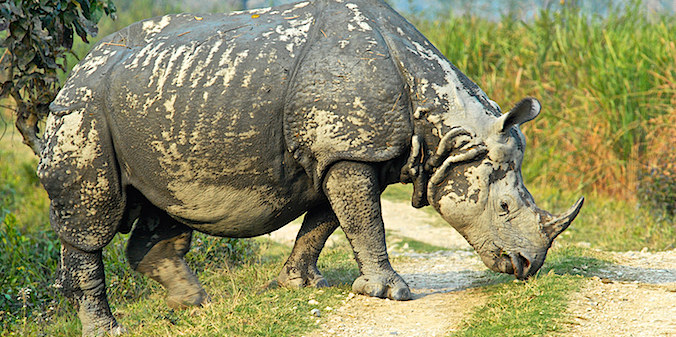
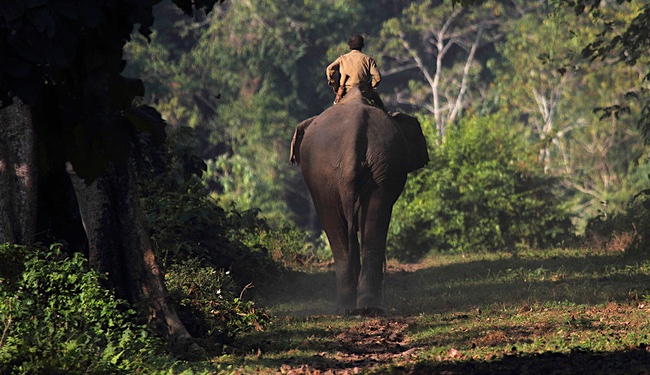
Nameri National park
Manas National park
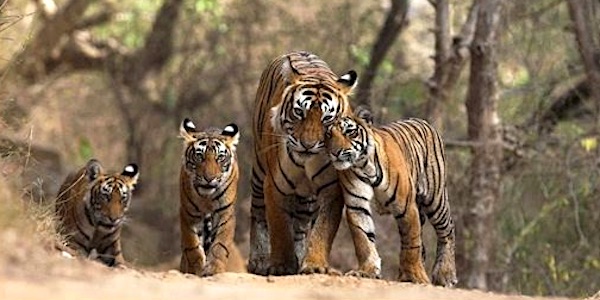
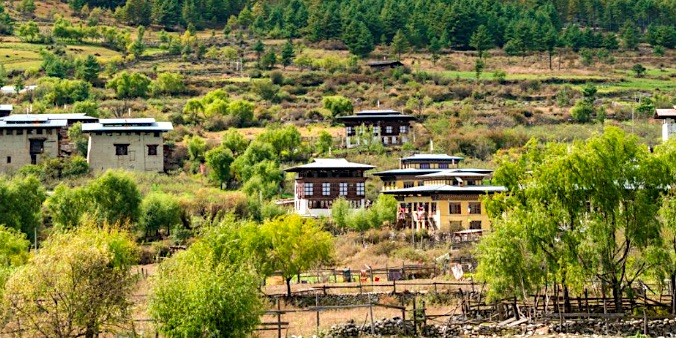
Gelephu
BIRDING at TINGTIBI
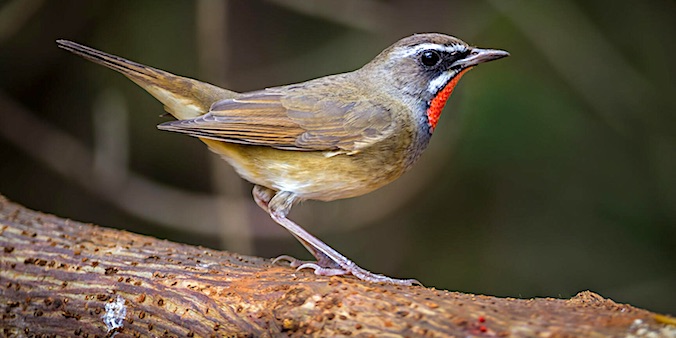
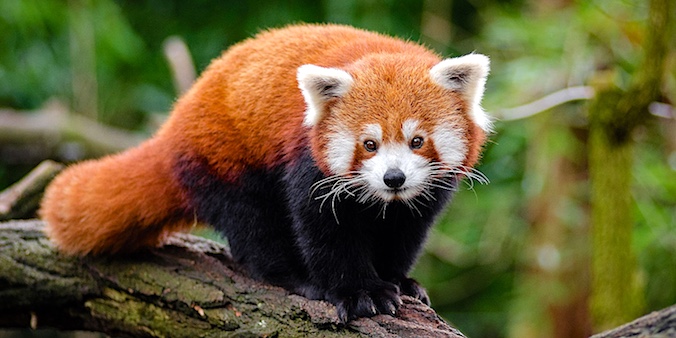
Royal Manas National Park
Trongsa Dzong
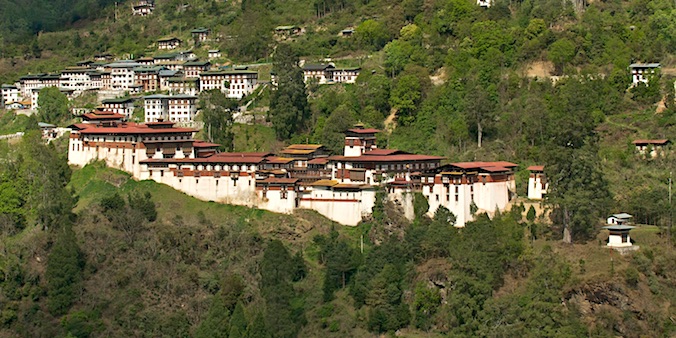
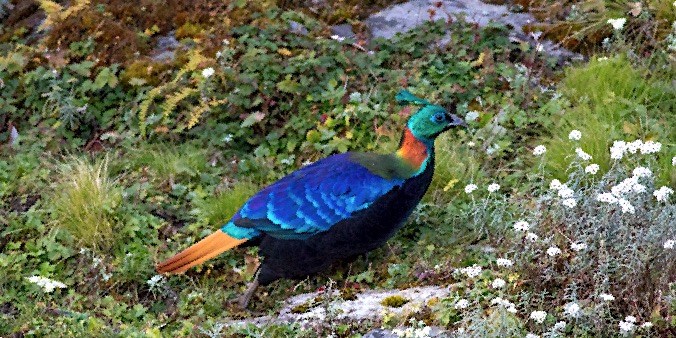
BIRDING Between ZHEMGANG and TRONGSA
Phobjikha
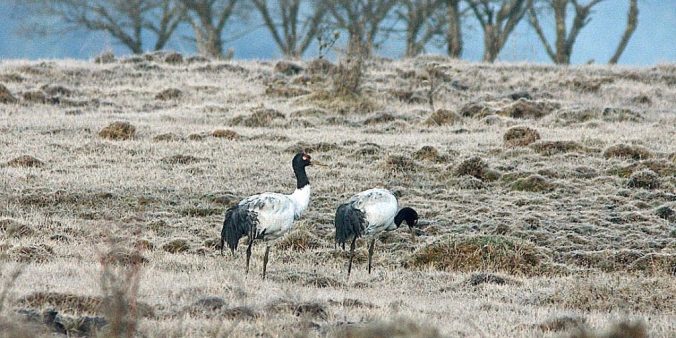
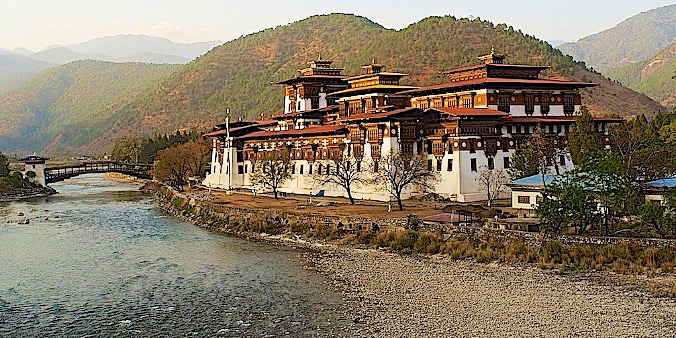
Punakha Dzong
BIRDING near PUNAKHA
The upper reaches of the Mo Chhu have some bird-rich forests. The forests are a delight in themselves, especially in spring time. Common species here are: black-chinned yuhina, spotted dove, black-chinned babbler, black-breasted sunbird, red-breasted rosefinch, fulvous-breasted pied woodpecker, large grey babbler, little bunting, little and slaty-backed forktail, large and small niltava and red-crowned jay. Also you may encounter red-headed trogon, orange-bellied leafbird, plain-backed thrush, spotted wren-babbler, rufous-capped babbler, blue-winged minla, whiskered yuhina, slaty-bellied tesia, ashy and hair-crested drongos, tibetan siskin, spot-winged grosbeak and scarlet finch. In the open areas near the river the spectacularly crested kingfisher and the extremely rare white-bellied heron.
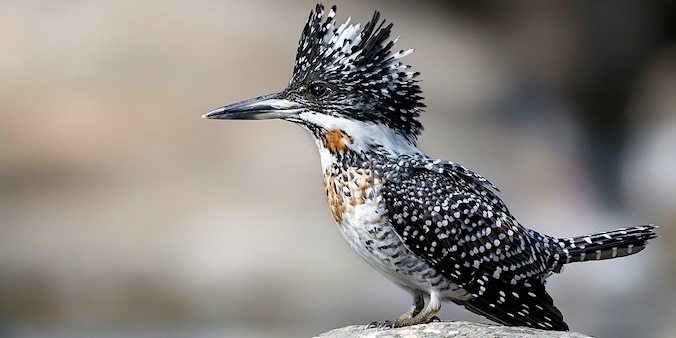
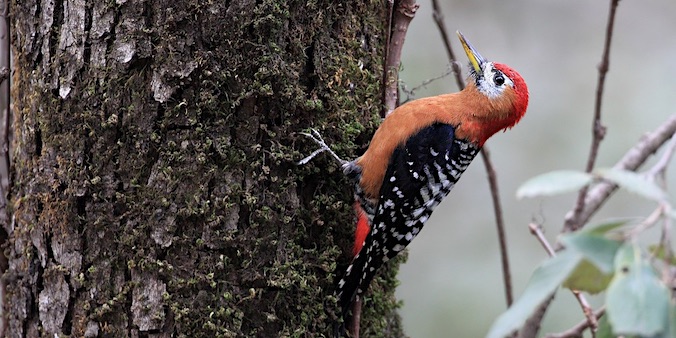
BIRDING near DOCHU LA
The forests north of Dochu La are among the best for birding in West Bhutan. At Lumetshawa, situated at approximately 1700m, you may hope to spot Ward’s trogon, as well as other species such as eurasian treecreeper, spotted forktail and slaty blue flycatcher. With a bit of luck, we may also encounter rare species of mammals that call this area home, such as musk deer, red panda, leopard and leopard cat. And who knows a tiger. At Lampelri botanical park, at 2100m, we will look for: rufous-bellied woodpecker, eurasian jay, hoary-throated barwing, brown parrotbill, chestnut-crowned warbler, speckled wood pigeon, brown parrotbill, streak-breasted scimitar babbler, Darjeeling and rufous-bellied woodpecker, plain-backed thrush, white-collared blackbird and green-backed tit, dark-rumped and dark-breasted rosefinch.
SIGHTS of THIMPHU
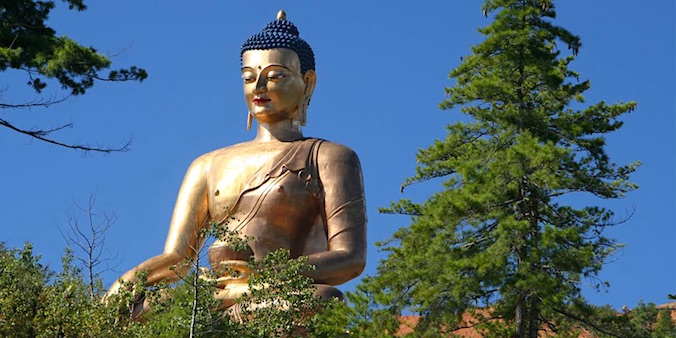
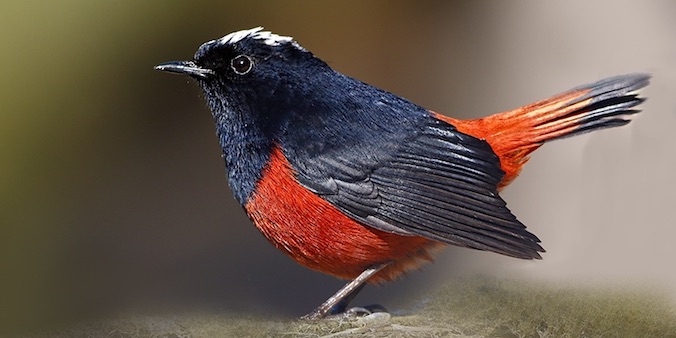
BIRDING near the PARO RIVER
BIRDS and VIEWS at the CHELE LA
Bhutan’s highest motarable pass, the Chele La (3990m), is easily accessible from Paro The narrow road creeps up through magnificent forests of enormous cedars, spruces and larches, as well as tree-high rhododendrons (blooming in April-May). Once up, weather permitting, you will be treated to beautiful views of the Himalayas, especially Mt. Jhomolhari (7329 m) right on the Tibetan border. Chele La gives us also easy access to alpine meadows and dwarf rhododendron scrub above the tree line. Here, we may encounter the beautiful Himalayan monal, blood pheasant, Himalayan griffon, kalij pheasant, spotted, black-faced and chestnut-crowned laughing thrushes, white-collared blackbird, grey-backed shrike, blue-fronted redstart, snow pigeon, spotted nutcracker, orange-flanked bush robin, alpine accentors and the beautifully coloured white-browed rosefinch.
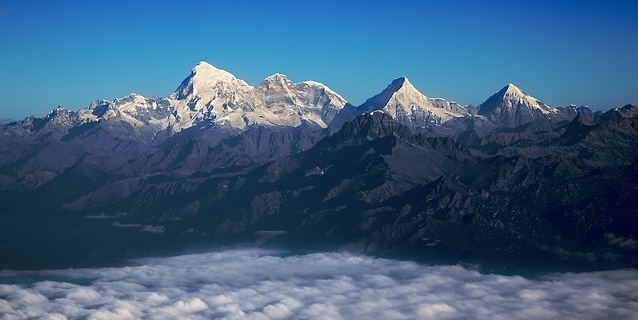
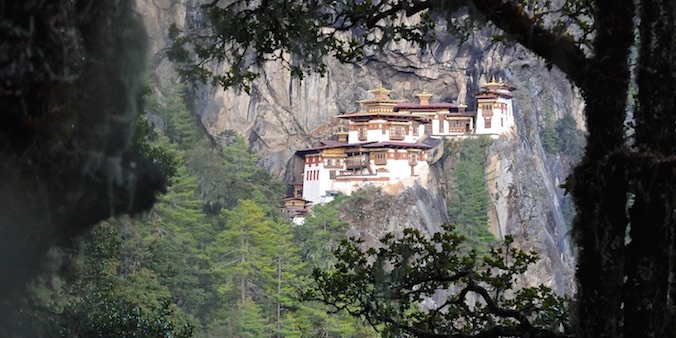
TakTsang Goemba (Tigersnest)
BIRDING near TAKTSANG GOEMBA
